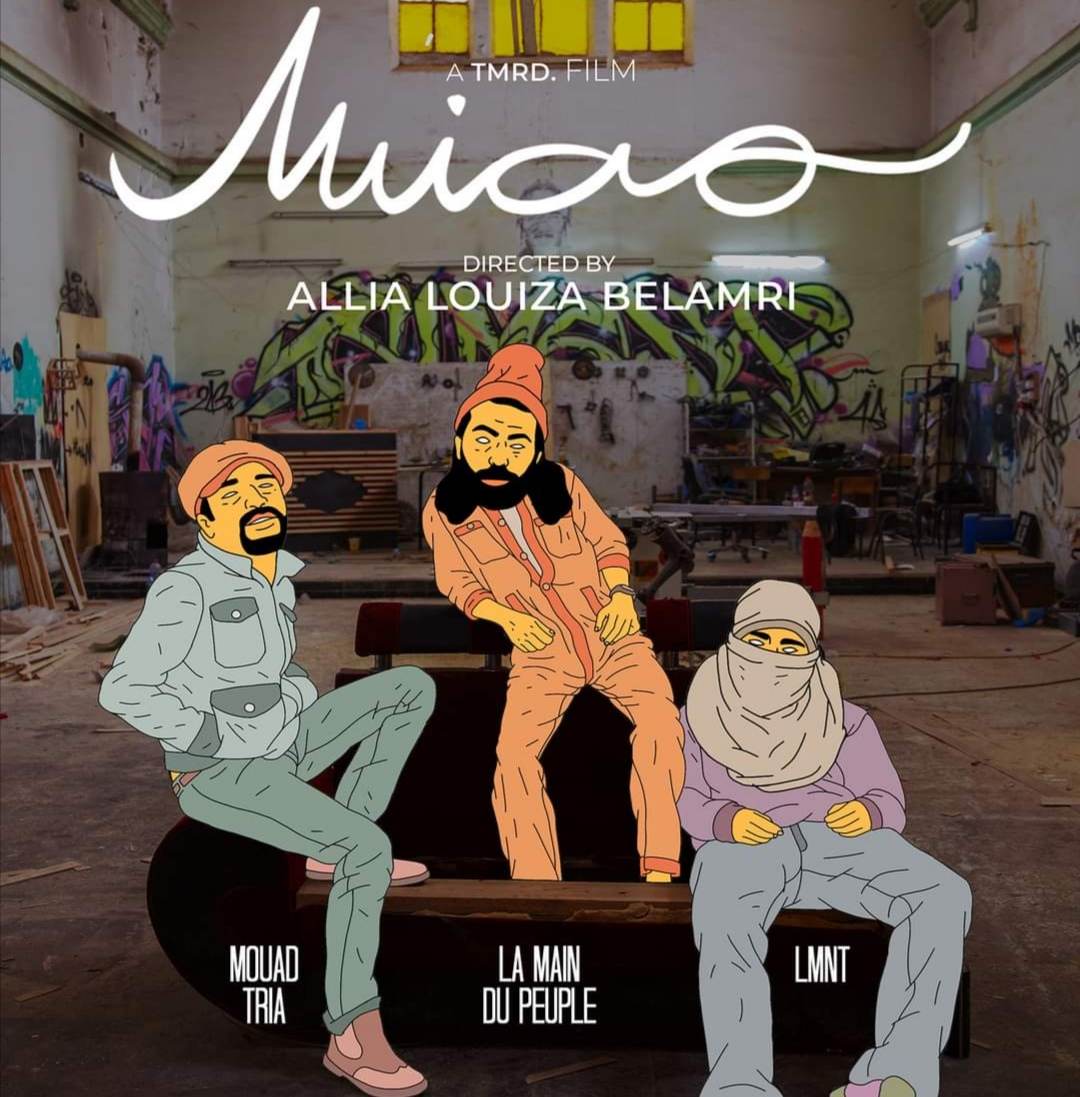Call it “urban art”, call it “street art” or “underground art”. Its actors assert themselves as belonging to the “international movement of forgotten artists” or to what they call, borrowing from popular language, “vegetables on the couscous”.
In a documentary titled “Miao” – an acronym for International movement of forgotten artists, in French –, Louiza Allia Belamri’s camera focused on three artists from the movement. The feature film was recently shown during an overbooked premiere at l’Institut Français of Algiers (IFA).
The movie explores the place of art within Algerian society, through a little immersion in the world of Algerian street art, following the path of Mouad Tria, Lyes Kerbaoui, aka “Lmnt” and Merine Hadj Brahim, aka “La main du peuple”. In the film, the three artists talk about art’s devouring passion, society’s incomprehension as well as their action which goes against the grain of bourgeois contemporary art.
We see “La main du peuple”, which many bypassers must have noticed on the streets of Sidi Bel Abbès, Oran, Algiers or Annaba. A proud finger, funny or accusing, was drawn anywhere his founder, Merine Hadj Brahim, went or passed by.
He tells the story of his first artistic stirrings, when he decided to sell his two-door Peugeot 206 for 330 thousand dinars in order to buy painting equipment and to create the first series fo “La main du peuple”.
Public venues versus cultural venues
“I looked for a place where to expose my works. I sent emails to galleries, showcasing my portfolio and my artistic approach. It was in vain. (…) Once, I met a gallery owner who did not respond to my email. She gave me the following answer: “La main du peuple is like a wolfhound, we cannot accommodate it in a house”. That day, penniless but with plenty of creative ideas, I stopped buying canvas that cost 4000 dinars per square meter, and opted for Kraft paper which can be exposed on every wall in public spaces. The only rule: do not get caught”.
Strange, cracked, orange hands started popping out like mushrooms all over the country. There were no limits, the walls and streets of the country became his great gallery, thus transforming public places into cultural places.
“Ordinarily, it is galleries that should promote the artist. Here, artists are the ones that make those spaces come alive. Things being what they are, the artist can make any space come alive. I can organize an exhibition in a café, there will be a lot of people and I can even sell my works”, says Merine.
The Sidi Bel Abbès-born artist believes art has always marked history and that, one way or the other, he will leave his mark in it. “During his lifetime, Issiakhem’s works did not have the value they have now. He was considered during his time as “vegetable on the couscous”, because people did not know that he would leave a historic mark. Nowadays, artists that are considered vegetables on the couscous will be writing art’s history in the future”.
“A couscous with no vegetables remains inedible because vegetables bring taste to it”, he added. He says he is ready to make sacrifices to make his art live.
“We only live once. It’s like in a video game where you only have one life. So it’s best to give it all. And to believe in dreams, even if it means making sacrifices”, he says with a wide smile.
Lyes, also known as “Lmnt”, appears with his face covered in all his public appearances, because, in his own words, he does not want to attract attention to his person but to his art. “With my face covered, it is my soul that touches you”, he says. According to him, his calligraphy shows what he calls “Algerian bipolarity”, something between light and dark.
“If people go to museums, it’s to take pictures. When they go to exhibitions, they expect to see something beautiful, but that’s not what they are given to see. We want to do something hard-hitting, like a slap”, he explained.
The film dedicated to them offers a classic device, very focused on speech. When the director gives way to images, that is when we perceive some aesthetic flashes. Produced by the new production company “Tmrd”, created by Haithem Ameur – himself a former member of “Miao” -, the movie is interesting in that it allows “vegetables on the couscous” to take their revenge…
